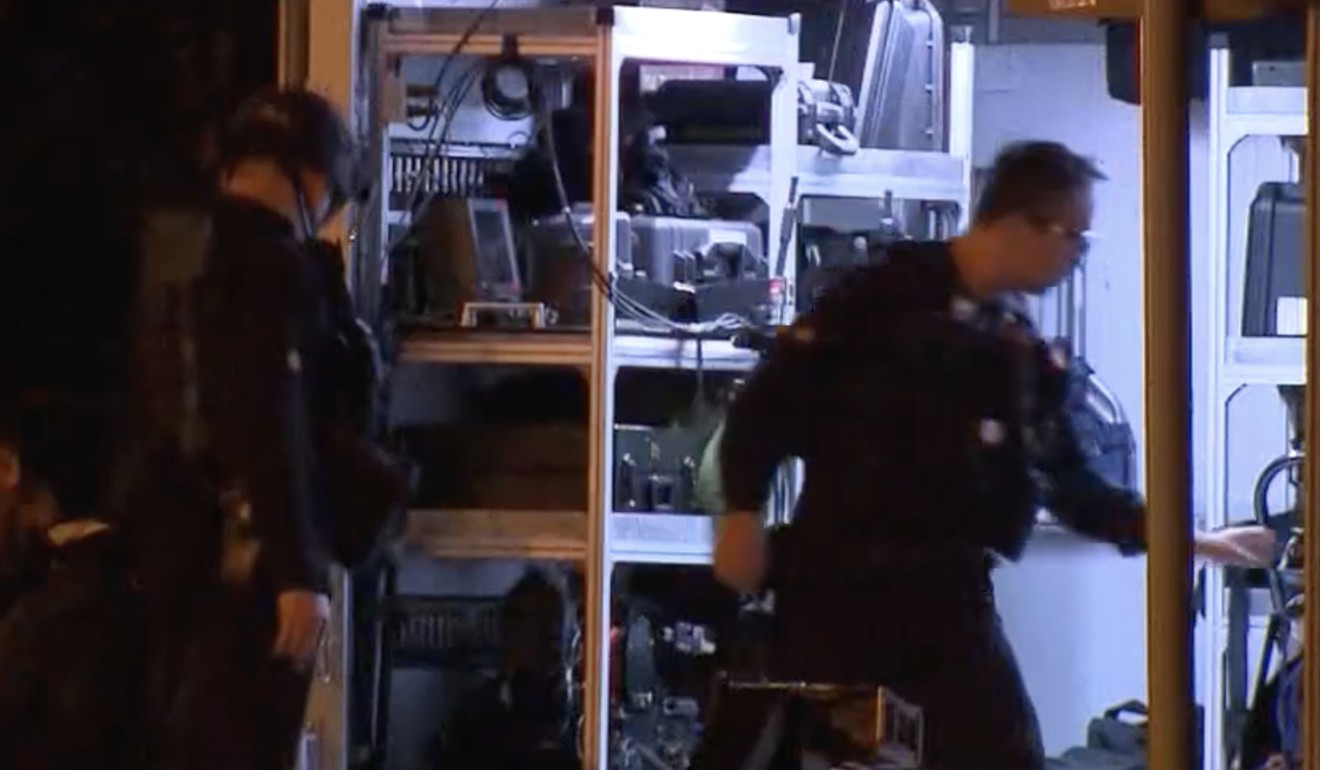
Hong Kong police defuse two home-made bombs containing 10kg of explosives found on school grounds
- Objects spotted in Wan Chai at Wah Yan College Hong Kong on Queen’s Road East at about 5.30pm
- Police say devices made with mobile phones, nails and high explosives
Bomb disposal officers in Hong Kong defused two home-made devices containing 10kg (22lb) of high explosives that were found on school grounds and designed to kill large numbers of people, police said late on Monday.
Officers said the bombs were “complete, fully functional and ready to be used” radio-controlled improvised explosive devices, or IEDs, and had one purpose only – to kill and maim.
A school janitor spotted the devices in the grounds of Wah Yan College Hong Kong on Queen’s Road East in Wan Chai at about 5.30pm.
Alick McWhirter, senior bomb disposal officer, said the devices contained two types of high explosives: a primary high explosive, which was designed to act as the detonator and booster, and a second one based around ammonium nitrate. They were also designed to fragment and included shrapnel, in the form of nails.

“These devices had only one function – to kill and maim people,” McWhirter said during a late-night briefing.
The bombs, including fragmentation, had a range of up to 50 to 100 metres (164 to 328 feet), possibly further, he said.
A section of the road between Kennedy Road and Stubbs Road was closed as police investigated the devices.
The school day had already ended at Wah Yan College when the devices were spotted under a school building that was supported on pillars on a slope. No evacuation was needed.
Senior Superintendent Li Kwai-wah of the organised crime and triad bureau said the devices were made with two sieves and wrapped in cling film. Two mobile phones connected to circuit boards were believed intended to be used as detonators.

“There was also a large amount of nails to upgrade the power to kill the people around,” Li said.
The other explosive was hexamethylene triperoxide diamine (HMTD), a dangerous high explosive compound. McWhirter said police believed the explosives were home-made from “precursor chemicals” and could not be bought. Precursor chemicals are substances that can be used to make explosives illegally.
Li said police would find out who made the bombs, why they were placed at a school and whether the incident was related to recent violent cases, especially to a gun and other weapons found on Sunday.

A police source said the force believed the devices were not targeting anyone at the school and had just been hidden there temporarily.
Wah Yan College would open for classes as normal on Tuesday, the school said.
Gunman plan to ‘slaughter’ Hong Kong police officers revealed in court
A witness said he saw at least 30 riot police officers in the area, as well as several firefighters and ambulances on the scene.
“There was a low-loader-type vehicle visible within the cordon near the junction with Kennedy Road. Its rear door was open, but it was not clear what police activity was around it,” the man, who asked not to be named, said.
In October, an IED exploded in Mong Kok, hurting no one.
The device, which was left in a flowerpot between Fife Street and Nathan Road, detonated after police officers parked their car and got out to clear protesters' roadblocks nearby. It was the first time an IED had been used in the ongoing anti-government protests, which have now gripped Hong Kong for six months.
The bomb contained a mobile phone, circuit board, battery and high-powered explosives. Police said the device was used to target them.
Li said they had yet to deconstruct the devices found on Monday and make a comparison with the one in Mong Kok. Li said they would also check whether the chemicals used were linked to those recently stolen from local university campuses.

